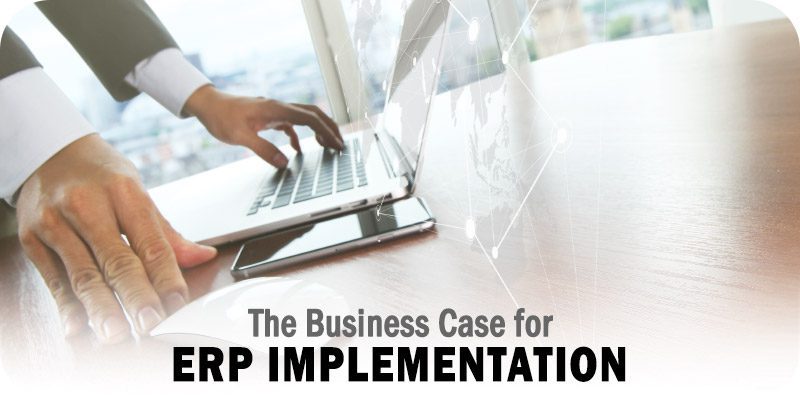The Business Case for ERP Implementation


The editors at Solutions Review have compiled this brief resource to help enterprise technology leaders create a business case for Enterprise Resource Planning (ERP) implementation projects.
Enterprise Resource Planning (ERP) is software that helps organizations manage various business processes, including inventory, order management, financials, human resources, and customer relationship management. An ERP system aims to provide a unified view of essential data and processes within an organization, thereby improving efficiency, visibility, and decision-making. An ERP system typically integrates data and processes from multiple departments and systems into a single, centralized system, reducing the need for manual data entry and reconciliation and providing real-time access to data.
However, convincing your company’s decision-makers that an ERP is worth investing in can be challenging and often requires you to make and present a business case to your company’s decision-makers that explains why the upgrade is worth the investment. With that in mind, we’ve compiled a few of the talking points you should prioritize when creating a business case for ERP implementation projects.
Making a Business Case for ERP Implementation
Creating a business case for an Enterprise Resource Planning (ERP) implementation is essential to gaining support and funding for the project. A business case outlines the benefits and costs of implementing an ERP system and justifies why the project is necessary. Below are some critical steps to consider when creating a business case for ERP implementations:
Identify Business Drivers
The first step in creating a business case is to identify the business drivers motivating the need for an ERP system. These could be pain points such as inefficient business processes, data silos, lack of visibility, or difficulty meeting compliance requirements. Clearly articulating the business drivers will help stakeholders understand the need for an ERP system.
Define Project Objectives
Once the business drivers have been identified, the next step is to define the project objectives. These should be specific, measurable, achievable, relevant, and time-bound (SMART). Goals might include improving efficiency, reducing costs, increasing revenue, enhancing customer service, or improving data accuracy. Defining these objectives will help ensure the project is focused and aligned with the organization’s strategic goals.
Develop a Cost-Benefit Analysis
The next step is to develop a cost-benefit analysis to assess the financial feasibility of the ERP implementation. This analysis should consider the total cost of ownership, including software licensing, hardware, implementation services, and ongoing maintenance and support. It should also consider the potential benefits, such as increased efficiency, reduced costs, and improved decision-making. The analysis should provide a clear picture of the project’s return on investment (ROI).
Identify Risks and Mitigation Strategies
ERP implementations are complex projects with risks such as delays, cost overruns, or user resistance. Identifying these risks and developing mitigation strategies to manage them is crucial. This might include creating a contingency plan, regular checkpoints, or additional end-user training.
Define Implementation Approach
The next step is to define the implementation approach, including the project scope, timeline, and resources required. This should include a clear project plan that outlines the project’s specific tasks, milestones, and deliverables. It should also consider the impact on business operations and the potential need for additional resources such as consultants, implementation partners, or IT staff.
Outline a Change Management Plan
ERP implementations require significant change management efforts to ensure end-users are prepared and willing to adopt the new system. It’s essential to outline a change management plan that addresses communication, training, and support needs throughout the implementation process. This should include identifying key stakeholders and their roles, developing communication plans, and designing training and support programs.
Obtain Stakeholder Buy-In
Finally, it’s crucial to obtain stakeholder buy-in for the ERP implementation. This includes senior executives, end-users, IT staff, and any other stakeholders affected by the project. The business case should be presented clearly and compellingly, outlines the project’s benefits, and addresses any concerns or objections that stakeholders may have.























